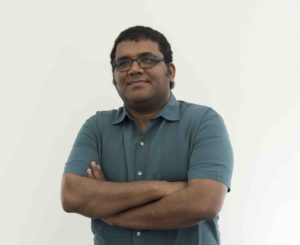
Srivatsan Raman
Assistant Professor, University of Wisconsin-Madison
My career path has taken me from process engineer in a petroleum refinery to a computational biologist, biochemist and now a synthetic biologist. A career in research was not what I had in mind after finishing a college, but a course in statistical mechanics changed the direction of my professional life. In the statistical mechanics course, I was awestruck that macroscopic properties of matter can be computed from molecular interactions using simple principles of probability and statistics. I decided switch fields from chemical engineering to studying biomolecules. As I started my Ph.D in biochemistry, I was inspired by the idea that the three-dimensional structure of a protein could be computed from its primary sequence. In Prof. David Baker’s laboratory (University of Washington, Seattle), I developed new computational methods to accurately predict three-dimensional structure of proteins rivaling experimental structures determined by X-ray or NMR. When I joined Prof. George Church’s group (Harvard Medical School) for postdoctoral training, my vision was to forge a new path to engineer proteins and biosynthetic pathways through the synergy of computational methods and high-throughput assays. Through biosensor-guided laboratory evolution, I engineered E. coli to overproduce a valuable natural product. Since biosensors are essential for engineering new cellular regulation, I developed a method to design new biosensors for cellular metabolites and valuable chemicals. As an independent investigator, my laboratory takes a systems and synthetic biology approach to understanding and designing biology at multiple scales: proteins, transcription regulation, metabolic pathways and whole organisms.
Visit website →